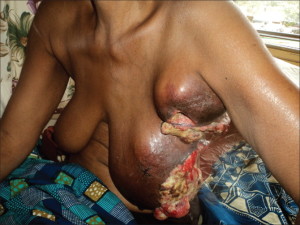Definition
Mastalgia is breast pain. There are two types of mastalgia or breast pain: cyclic and noncyclic. Cyclical breast pain is most often associated with menstrual periods. Noncyclical breast pain is not related to the menstrual cycle.
Causes
Mastalgia can be caused by:
- Hormonal changes associated with the menstrual cycle
- Pregnancy
- Trauma to the breast
- Mastitis
- Thrombophlebitis
- Stretching of breast ligaments
- Pressure from a bra
- Hidradenitis suppurativa
- Certain medications, such as hormone medications, antidepressants, or certain heart medications
Risk Factors
Factors that may increase your risk of having mastalgia may include:
- Having a history of breast surgery or breast injury
- Having large breasts
Symptoms
Symptoms of mastalgia may include pain in the breast area. Pain may be mild or severe. It may occur in both breasts or just one. It may be painful only in one spot or all over the breast.
When Should I See a Doctor?
Call your doctor right away if you have any signs of infection, such as redness, tenderness, fever, or chills.
Call your doctor if you notice any other changes in your breasts, such as:
- Change in the size or shape of your breast
- Discharge from your nipple
- New lumps or masses felt in the breast
- Other changes to the skin on your breasts, such as crusting, dimpling, or puckering
Call your doctor if your breast pain persists, interferes with your daily routine, or is in one specific area of your breast.
Diagnosis
Your doctor will ask about your symptoms and medical history. A physical exam will be done. The diagnosis is most often done with history of pain.
Your doctor may order further testing to look for any suspicious changes. These tests may include:
- Mammogram
- Ultrasound
- Breast biopsy
Treatment
Talk with your doctor about the best treatment plan for you. Treatment may be based on what is causing your breast pain. General treatment options include:
Medications
Topical nonsteroidal anti-inflammatory drugs (NSAIDS) may reduce the pain associated with mastalgia. Other medications may be prescribed to help reduce cyclical mastalgia.
If you are taking hormones, such as estrogen or progesterone, your doctor may make changes to your medications to reduce pain.
Other Treatments
Your doctor may suggest some changes depending on the cause of your breast pain. These might include:
- Wearing a properly fitting bra that has good support
- Avoiding caffeine
- Eating a low-fat diet
- Using a hot or cold compress
Prevention
There are no current guidelines to prevent mastalgia.

 Patient teaching about Screening Mammogram involve: –
Patient teaching about Screening Mammogram involve: –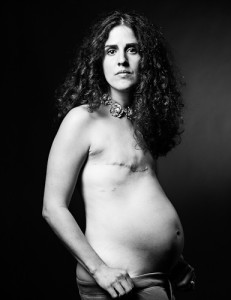 “Breast cancer is not a Pink Ribbon”. Please say that out loud and tell it to your friends…
“Breast cancer is not a Pink Ribbon”. Please say that out loud and tell it to your friends…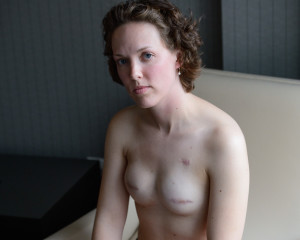 Breast is the greatest symbol of femininity in all mammals. In many mammals, the only way to tell the physical difference between a male and a female is the mammary glands AKA breast, or udder in four-legged animals. Breast cancer specifically affects the greatest symbol of femininity tearing down and shattering many women definition of beauty. Cancer treatment, even worse takes away the most prominent feminine features of human beings like hair, eye lashes, breast, skin and nails.
Breast is the greatest symbol of femininity in all mammals. In many mammals, the only way to tell the physical difference between a male and a female is the mammary glands AKA breast, or udder in four-legged animals. Breast cancer specifically affects the greatest symbol of femininity tearing down and shattering many women definition of beauty. Cancer treatment, even worse takes away the most prominent feminine features of human beings like hair, eye lashes, breast, skin and nails.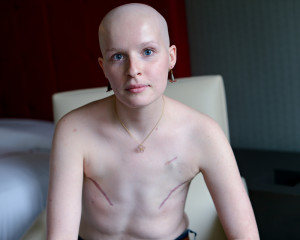
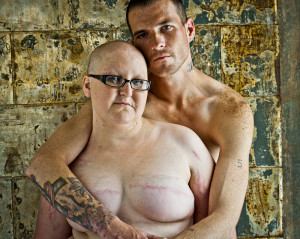 Breasts are normally obscured in non-pornographic photography/media but David defied the norms and used his photography to show how women look after mastectomy. Rather than demoralizing, David’s photography is empowering and creating a
Breasts are normally obscured in non-pornographic photography/media but David defied the norms and used his photography to show how women look after mastectomy. Rather than demoralizing, David’s photography is empowering and creating a To me, these SCAR project pictures show a new shift in society’s acceptance of a tribe of scarred, breastless and one breasted women. It is a high time we start accepting SCARRED women are just as beautiful since 1 in 8 women will be diagnosed with breast cancer at some point in their lives. This new tribe inspired by David is growing and will at some point in future became the norm, just the same way we no longer see pregnant women as unattractive. This exposure will help women to accept what we might not be able to change. Perhaps fashion designers will soon start making bras for women with one breast and accept them as “normal.” What if not having breasts or having one breast became acceptable? What if mastectomies and scarred breast are seen as a symbol of honor and strength? What if the society could tone down the breast obsession with breasts just a little bit and appreciate David work on SCAR project for pioneering the new “normal” for breast cancer fighters and survivors?
To me, these SCAR project pictures show a new shift in society’s acceptance of a tribe of scarred, breastless and one breasted women. It is a high time we start accepting SCARRED women are just as beautiful since 1 in 8 women will be diagnosed with breast cancer at some point in their lives. This new tribe inspired by David is growing and will at some point in future became the norm, just the same way we no longer see pregnant women as unattractive. This exposure will help women to accept what we might not be able to change. Perhaps fashion designers will soon start making bras for women with one breast and accept them as “normal.” What if not having breasts or having one breast became acceptable? What if mastectomies and scarred breast are seen as a symbol of honor and strength? What if the society could tone down the breast obsession with breasts just a little bit and appreciate David work on SCAR project for pioneering the new “normal” for breast cancer fighters and survivors? The happiness of finally having a son was short-lived. Lucy’s fungating breast mass was growing bigger and bigger by the day. Her pain and suffering was becoming more and more intolerable. The mass became infected and need surgery though her health condition could not have allowed it. She could not have survived a surgery, if there was one available. Lucy was abandoned by her friends, family and lovers to die in the hospital. Meru Hospice was her new home. Doctors could not operate on her. Knowledge and resources were not there.
The happiness of finally having a son was short-lived. Lucy’s fungating breast mass was growing bigger and bigger by the day. Her pain and suffering was becoming more and more intolerable. The mass became infected and need surgery though her health condition could not have allowed it. She could not have survived a surgery, if there was one available. Lucy was abandoned by her friends, family and lovers to die in the hospital. Meru Hospice was her new home. Doctors could not operate on her. Knowledge and resources were not there.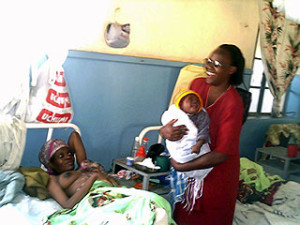 Baby Moses at 5 months old and was doing really well; he was looking bright and healthy. But it was becoming progressively difficult for Lucy to take care of him. No relative ever came to visit her. She is abandoned to die alone. She depends on relatives of neighboring patients to assist her wash her clothes, change and feed her baby.
Baby Moses at 5 months old and was doing really well; he was looking bright and healthy. But it was becoming progressively difficult for Lucy to take care of him. No relative ever came to visit her. She is abandoned to die alone. She depends on relatives of neighboring patients to assist her wash her clothes, change and feed her baby.
